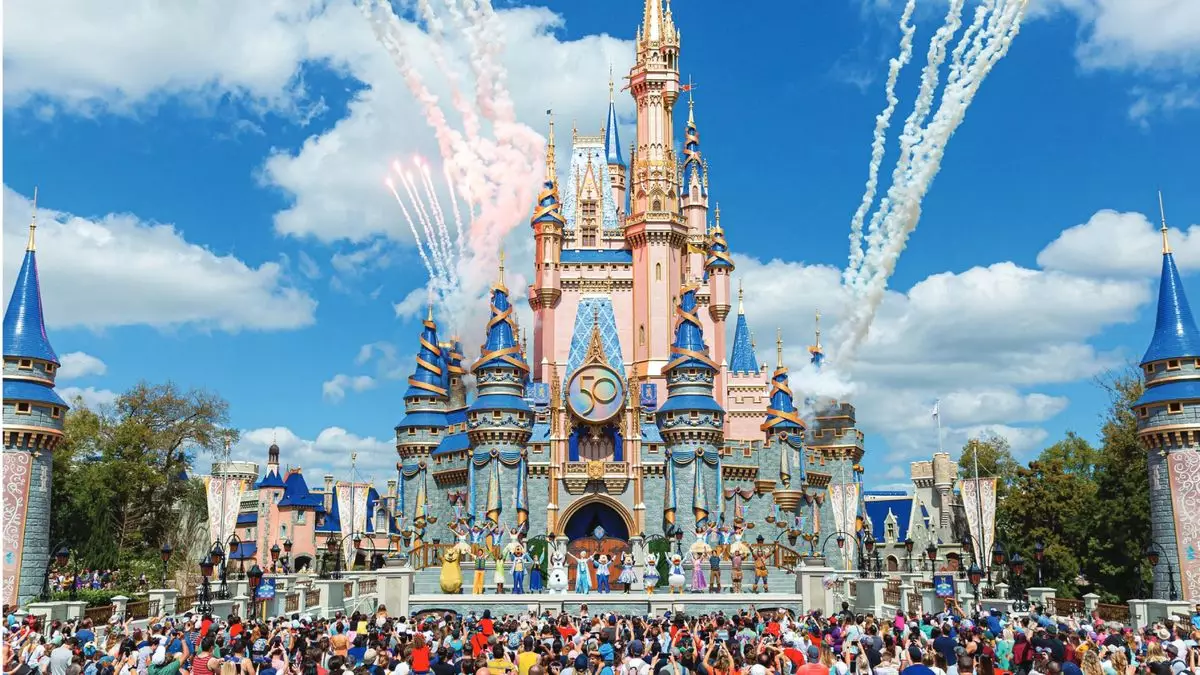Disney’s resorts in Florida and California are far more than just entertainment hubs; they serve as formidable economic engines that drive significant financial growth in the United States. A new study commissioned by Disney highlights the astounding economic contribution of these two locales, suggesting a combined impact of nearly $67 billion on the national economy. These statistics reveal the far-reaching influence of Disney’s theme parks, elevating them to a status akin to crucial economic pillars not only in their respective states but also across the entire nation.
Michael Mariano, the director of economic development at Tourism Economics, emphasized this pivotal role during a recent media briefing. The study is groundbreaking as it provides a comprehensive view of the economic repercussions stemming from both parks, a first in Disney’s analytic approach. By diving into the fiscal impacts of Walt Disney World Resort and Disneyland Resort, it becomes apparent that these resorts contribute immensely more than just magical experiences for families; they produce real, measurable economic outcomes.
Defining Economic Impacts
The methodology utilized in this study is meticulous and multi-faceted, encapsulating three core components: direct impacts, indirect impacts, and induced impacts. Each component paints a layer of understanding regarding how these theme parks contribute to the economy. Direct impacts arise from all spending by guests on-site and ancillary expenditures surrounding their visits. For example, spending doesn’t just end at the entrance gates; it extends to nearby restaurants, transportation services, and accommodations that benefit from heightened tourist traffic.
Indirect impacts include the positive effects of Disney’s procurement practices. The study underscores how Disney actively supports local suppliers and businesses, creating a symbiotic relationship that bolsters local economies. This type of community investment is often overlooked but is crucial for understanding the visualized “domino effect” of financial success facilitated by a high-profile brand like Disney.
Induced impacts encapsulate the salaries and wages of those employed either directly or indirectly by Disney. Employees from the parks spend their earnings in the local economy, fueling consumption and contributing further to regional economic health. Together, these components underscore a comprehensive approach to analyzing Disney’s touch on economic vitality.
Impressive Figures: The Numbers Behind the Magic
Digging deeper into the figures, the results from Mariano’s study become staggering. For the fiscal year 2024, Disneyland is projected to generate an economic impact of $16.1 billion in Southern California alone. To put that into perspective, this amount is nearly equivalent to the annual expenditures of American consumers on pizza delivery, suggesting that Disney’s value extends beyond mere entertainment into essential economic contributions.
The park serves as a major employer, directly supporting over 102,000 jobs in the area, with around 36,000 cast members employed directly by Disneyland. The significance of these numbers cannot be understated; Disneyland stands as the largest employer in Orange County and has an established track record of contributing to the socio-economic fabric of the region.
On the flip side, Disney World makes equally compelling claims in Florida, generating an impressive total economic impact of $40.3 billion for the fiscal year 2022. Notably, it supports approximately 263,000 jobs in the region and contributes $2.6 billion in tax revenue. When you look closer, you see that even beyond these regional benefits, the resorts create approximately $10.2 billion worth of economic activity that ripples outward across the country.
Comprehending the Broader Impact
Considering these numbers collectively illustrates not just regional importance but a national narrative. The combined economic impact of nearly $67 billion mirrors some of the most cherished spending events in American culture, equating their significance to consumer expenditure on holidays such as Valentine’s Day and Halloween. This parallel shines a spotlight on Disney’s role as not merely a provider of joy and wonder but also as a linchpin in the American economy, leading us to rethink our perceptions of theme parks.
Beyond profits and revenue, the analysis posits a critical question: What does this mean for the future? As Disney continues to invest in its resorts, it stands to reason that its economic influence will only deepen. Understanding the nuances of how such entertainment businesses shape economies is essential for policymakers, business leaders, and the communities surrounding Disney’s magical realms. With the cost of living rising and communities seeking ways to boost local economies, the ongoing assessment of such an influential player becomes imperative.


Leave a Reply